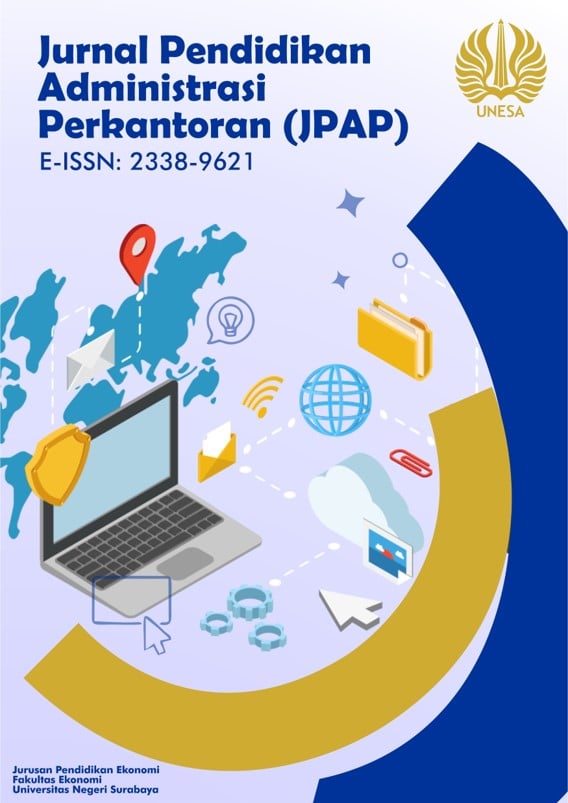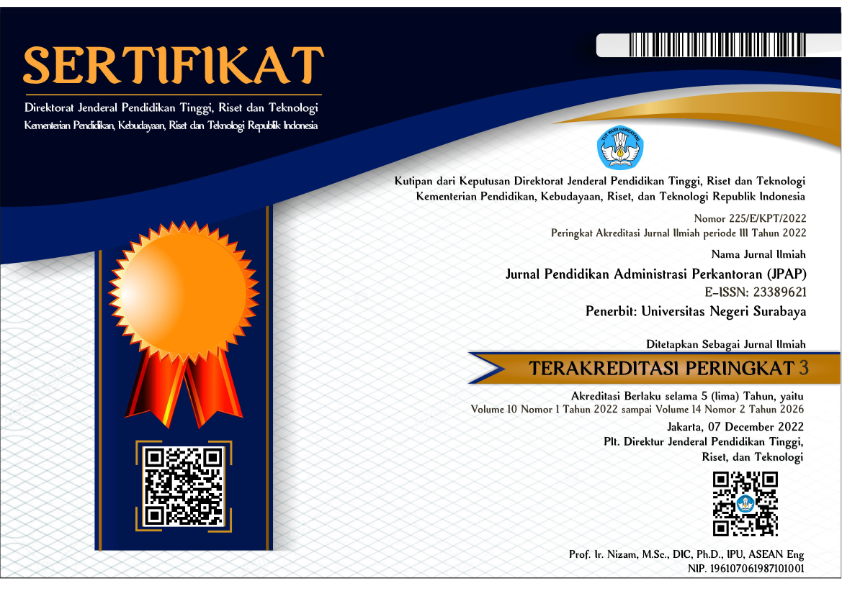Pemanfaatan Media E-Learning Moodle Untuk Menunjang Pembelajaran Mahasiswa di Fakultas Manajemen dan Bisnis Universitas Ciputra
DOI:
https://doi.org/10.26740/jpap.v8n1.p169-179Keywords:
Moodle, Pembelajaran, E-learningAbstract
Abstrak
Very rapid technological developments in this current era of globalization provide so many benefits in many social aspects. The use of the technology is used by the humans to facilitate every humans job. The development of technology does not only help humans in the industrial field, but also in education. This is done so that future generations are not left behind and can help to build a nation's progress. The purpose from thid study was to analyze the use of moodle e-learning media to support student learning at the Faculty of Management and Business at Ciputra University. This type of research is a qualitative descriptive study conducted at the Faculty of Management and Business at Ciputra University. Data collection techniques are done by conducting interviews and documentation. While the data analysis techniques go through several steps, namely: data collection, data reduction, data presentation, and drawing conclusions or verification. The results show that: 1) moodle e-learning media is considered interactive because it has features that make interaction between students and lecturers more enjoyable, especially as mentioned earlier that with the help of an application called 'zoom' then activities such as video conferencing can done anywhere, and not only that they can also make presentations or do quizzes, exams, and other activities that are usually done in class; 2) the use of moodle e-learning media is indeed very easy, mainly used as a learning medium as a helper or substitute for learning activities in class, in the sense that activities in the classroom can still be done even if the lecturer or student are not in the same area, but still, the lecturer able to provide material and students can also continue to receive material from lecturers even though they are outside the classroom.
References
Arikunto. (2013). Prosedur Penelitian Suatu Pendekatan Praktik. Jakarta: PT Rineka Cipta.
Bikuno, Jamaludin, & Hasdin. (2010). Meningkatkan Motivasi Belajar Siswa Kelas IV SDN Ambelang Pada Mata Pelajaran PKn Melalui Model Pembelajaran Kooperatif Tipe Jigsaw. Jurnal Kreatif Tadulako Online. 2(2), 42-50.
Chung & Ackerman. (2015). Student Reactions to Classroom Management Technology: Learning Styles and Attitudes Towards Moodle. Journal of Education for Business, 90: 217-223.
Hamalik. (2001). Proses Belajar Mengajar. Jakarta: Bumi Aksara. Metode Diskusi.
Karwati. (2014). Pengaruh Pembelajran Elektronik (E-learning) Terhadap Mutu Belajar Siswa. Jurnal Penelitian Komunikasi.17 (1), 41-53.
Katsamani et al. (2012). Designing a Moodle course with the CADMOS learning desiging tool. Journal of Educational Media International, Vol 49 No 4, 317-331.
Moleong. (2012). Metodologi Penelitian Kualitatif. Bandung: PT Remaja Rosdakarya Offset.
Muazizah, et al. (2017). Keefektifan Penggunaan E-learning Berbasis Moodle Berpendekatan Guided Inquiry terhadap Hasil Belajar Siswa. Jurnal Antologi Pendidikan Luar Sekolah. 1(1), 1760-1768.
Pane & Dasopang, D. (2017). Belajar dan Pembelajaran. Jurnal Kajian Ilmu-ilmu Keislaman. 03(2), 333-352.
Patton, M.Q. (1987). Qualitative Evaluation Methods. Beverly Hills: Sage Publications.
Satori, D. & Aan, K. (2017). Metodologi Penelitian Kualitatif. Bandung: Alfabeta.
Sugiyono. (2010). Metode Penelitian Pendidikan: Pendekatan Kuantitatif, Kualitatif, dan R & D. Bandung: Alfabeta.
Utami. (2016). Implementasi E-learning untuk Meningkatkan Aktivitas Belajar Siswa. Jurnal Komputer Terapan. 2(2), 169-178.
Putra, Kamil, & Pramudia. (2017). Penerapan Metode Pembelajaran Mandiri dalam meningkatkan Hasil Belajar Peserta Didik. Jurnal Antologi Pendidikan Luar Sekolah. 1(1), 23-36.
Zyainuri & Marpanaji. (2013). Penerapan E-learning Moodle untuk Pembelajaran Siswa yang Melakukan Prakerin. Jurnal E-learning Vokasi. 2(3), 410-425.
 Abstract views: 970
,
Abstract views: 970
, PDF Downloads: 3959
PDF Downloads: 3959










